Chapter 4, Part 15
In 2006 I was in my second year learning French, and like many others who learned the language, I became a Francophile. I spent a considerable amount of time turning the pages of various French magazines and tuning into TV5Monde whenever possible, although only about 20% was intelligible to me. Then in the same year I came across a novel, which I have yet to finish, and learned about a place I never knew existed.
Life of Pi follows the life of a boy called Piscine Molitor Patel, or Pi, who spent hundreds of days on a lifeboat with a Bengal tiger. Nevertheless it was Pi’s hometown, a former French colony called Pondicherry, which drew my attention the most. The city which is now part of Puducherry – one of India’s seven union territories (which are ruled directly by the Central Government) – was the seat of French colonial administration in India for almost three centuries. Before reading the book, I always assumed that the British were the only European power who colonized the South Asian country. Hence my amusement upon learning about French India.
My interest in Pondicherry gradually faded away as I stopped learning French, and it was not until 2012 when the former French colony reappeared on my mind when James and I were planning the itinerary for our months-long trip in 2015. Surrounded by the Indian state of Tamil Nadu, visiting Pondicherry was only natural as the small territory was conveniently located midway between the town of Kumbakonam and Chennai.
However, as our journey across Tamil Nadu coincided with the peak of the northeast monsoon which caused severe flooding in places all over the state, we were not able to visit a few sites. On the day we left Kumbakonam for Pondicherry, we had high hopes for the weather to improve. But in the morning of our last day in the small city, we were informed by one of the staff members of our hotel that the road to Pondicherry was cut off due to the flooding. We decided to wait while he kept calling people to give him updates on the road condition. Several hours later, good news came: the road was now accessible and we were good to go.
After traveling for a few hours in our small rented car, we were confronted with an inconvenient reality just before we entered Pondicherry. The main access to the city was still flooded with water reaching as high as one and a half meter, obviously not safe for our driver to keep going. He could have said to us that he couldn’t go any further, but he decided to ask some locals and a police officer for an alternative route. Eventually, after a small detour, he managed to take us to Pi’s hometown, which was surprisingly not quite what I had imagined as everything looked just exactly the same with other cities in Tamil Nadu. Only after venturing into the city’s French Quarter did I see the stately and well-preserved French colonial buildings I had always imagined.
Walking into the French Quarter was like entering an entirely different city: clean streets, beautiful French buildings, well-kept gardens, quiet neighborhoods, and – most surprising of all – a wide and pleasant beach promenade. While in Goa street and shop signs were mostly written in English and Portuguese, in Pondicherry Tamil and French were used instead. Former French colonial administration buildings lined the street parallel to the promenade, constantly receiving gentle breeze, at times violent storms, from the Indian Ocean. The French Quarter’s grid plan, meanwhile, was peppered with elegant old churches.
Physical vestiges of a bygone French era were palpable everywhere we looked, thanks to centuries of French presence in this part of the subcontinent. The French, however, were considerably late in joining the spice race which by the 17th century was dominated by the English (later the British) and the Dutch through the East India Company (EIC) and the Dutch East India Company (VOC), respectively. One of the reasons for this was the fact that the kings of France were more focused on resolving internal issues as well as consolidating their power in continental Europe, rather than expanding their influence overseas.
Eventually in 1642, the French established their own East India company, more than four decades after the English and the Dutch set up their own. Unlike the EIC and VOC, however, the French East India Company saw only very limited financial success. Its inability to compete with the EIC, which later controlled much of the trade between India and the rest of the world, and the VOC which controlled the trade in Sri Lanka and the Spice Islands (part of modern-day Indonesia), brought the company to its demise a century after its establishment. A few years later it was resurrected, only to be liquidated several years afterward following the French Revolution.
Pondicherry was acquired by the French from the Sultan of Bijapur in 1673, five years after they established the first French factory in India, on the subcontinent’s western coast. However, as the British consolidated their power and possessions in India, the French were forced to retreat to small pockets of land scattered both on the Coromandel and Malabar coasts, the east and west coasts of India respectively. In the decades that followed, Pondicherry changed hands between France and Britain until 1816 in the wake of Napoleon’s defeat in Europe a year earlier. As agreed by both powers in 1814, Britain would restore the French colonial possessions it occupied.
The French remained in Pondicherry for more than a century until India gained independence from the British, an event which sparked nationalist sentiment among the locals in Pondicherry and other French possessions in India. In 1954, India took over all French colonies in the subcontinent which was followed by the annexation of Goa seven years later, effectively uniting all lands south of the Tropic of Cancer in the Indian subcontinent under Delhi’s control.
The French had long left Pondicherry, but their churches and former administration buildings are still standing, providing a romantic backdrop for movies and TV commercials alike. French is still taught at schools, but unlike in Indochina where many dishes reflect the marriage between French technique and local ingredients, in Pondicherry southern Indian food is king. Perhaps it’s their way of reminding visitors that in spite of the French flair, this is still India with all the exotic scents and sights.
Click here for the full list of stories from the Spice Odyssey series.
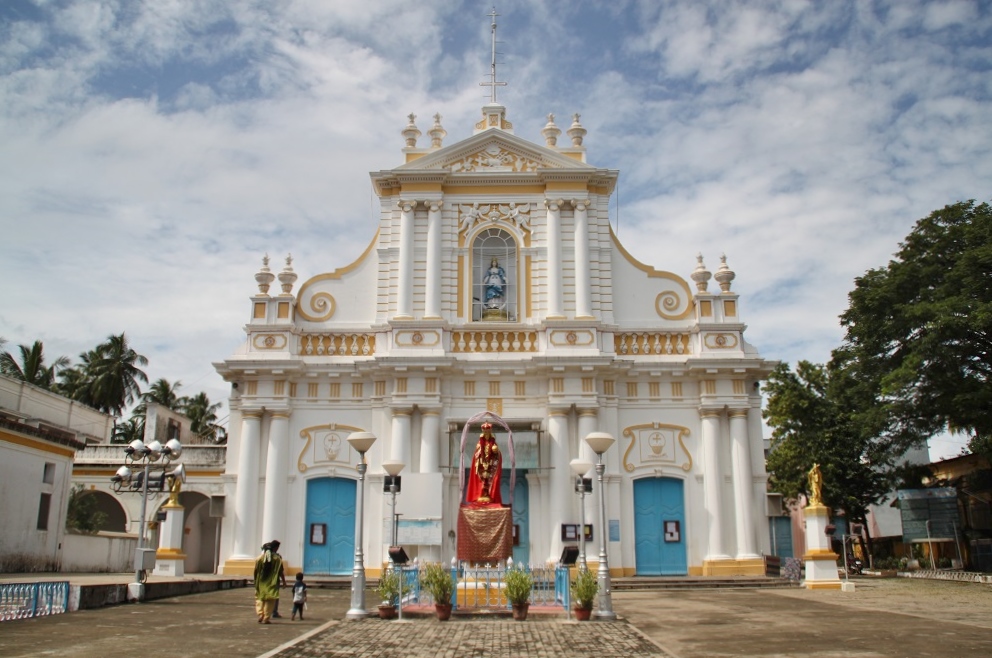
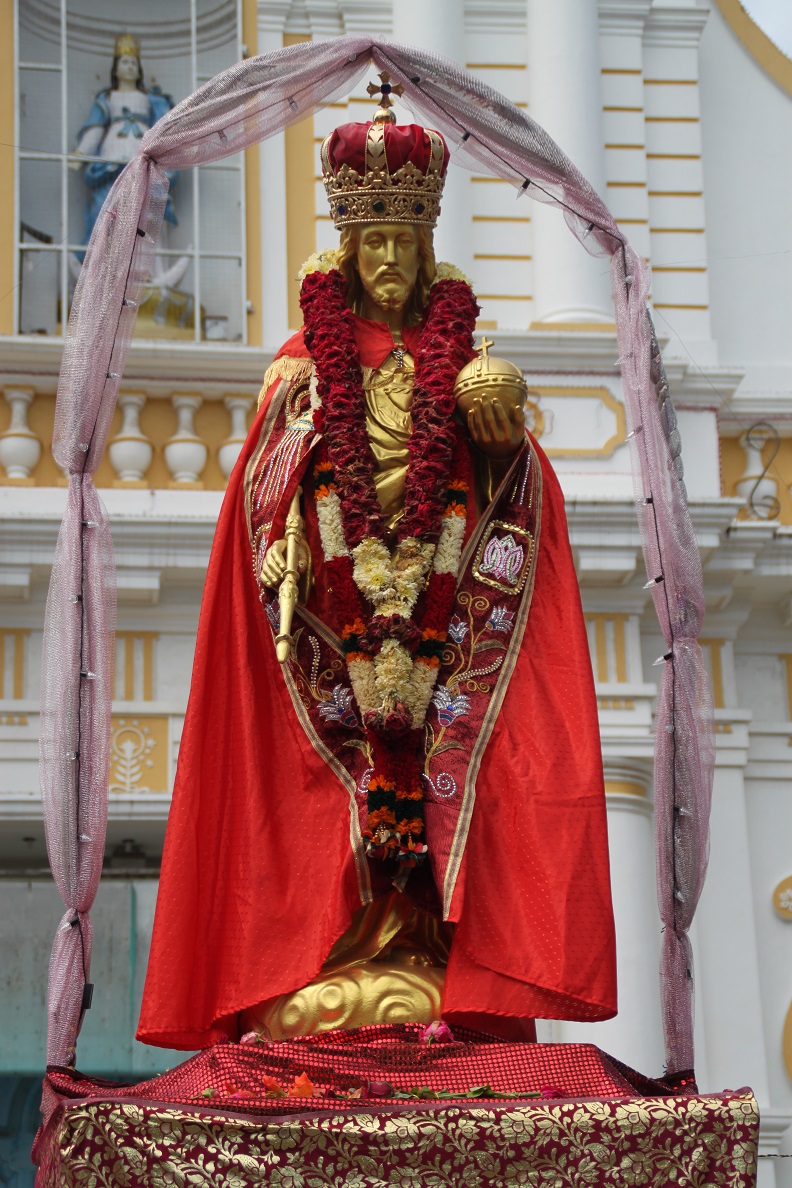
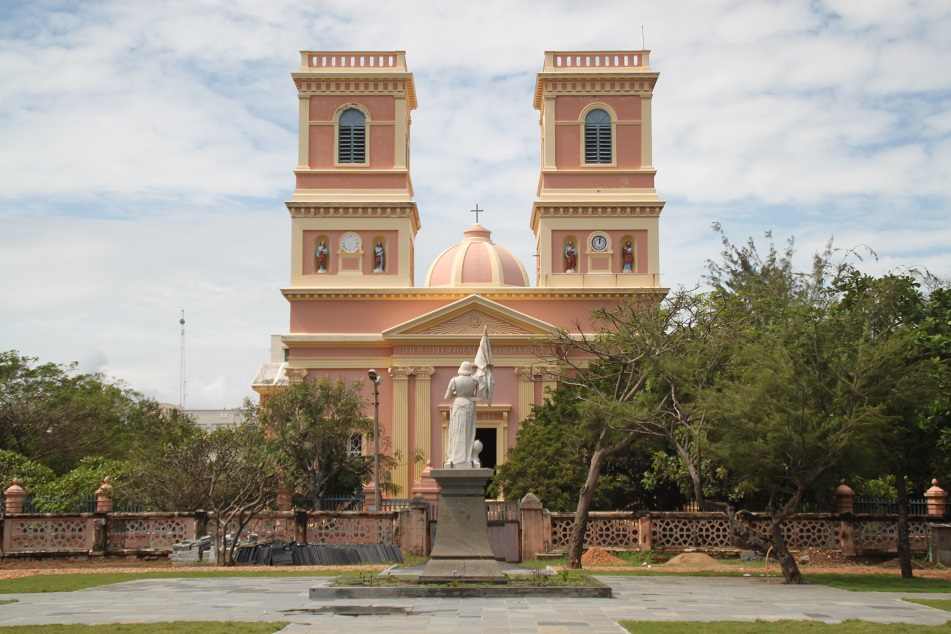
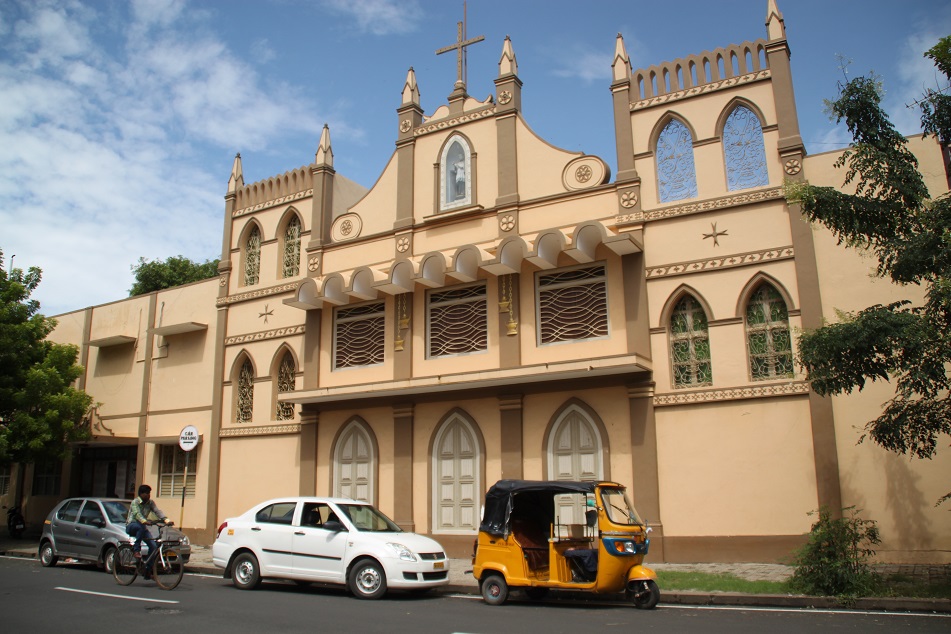
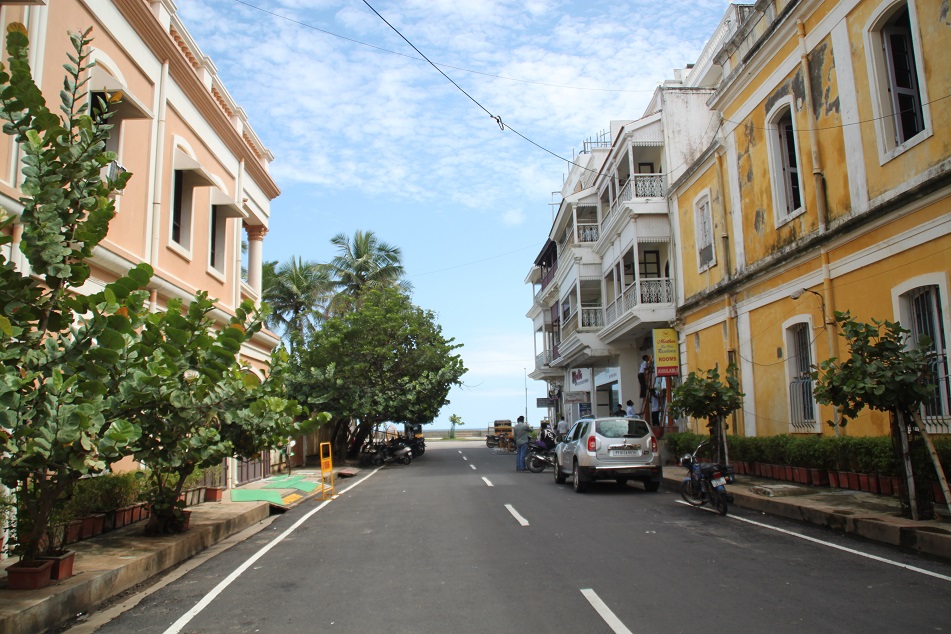
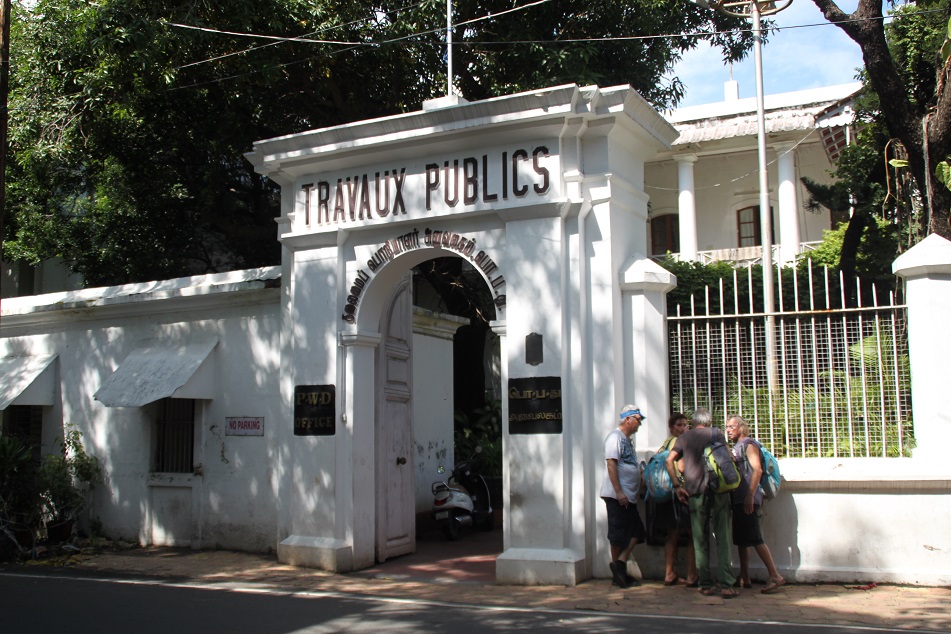
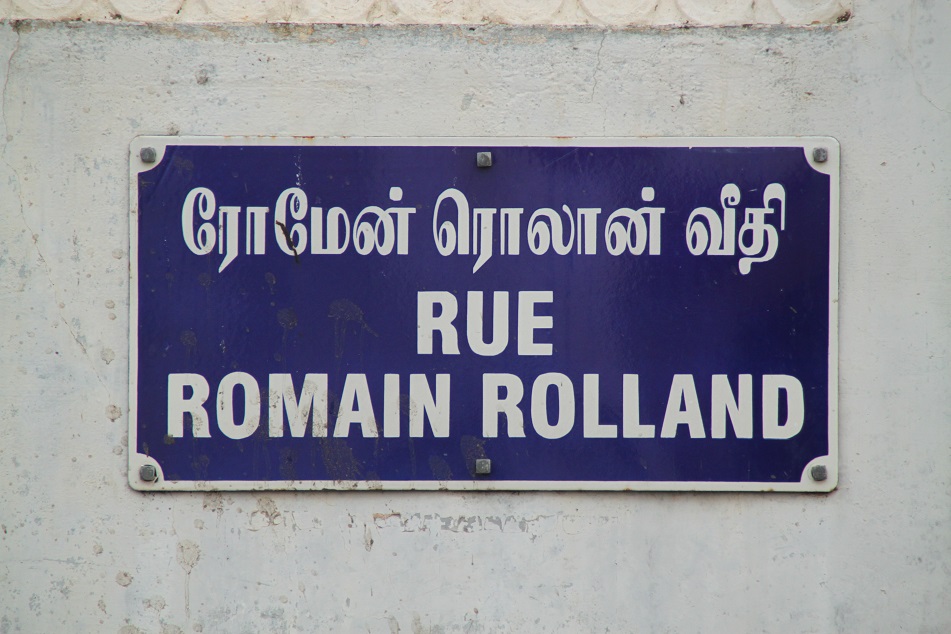
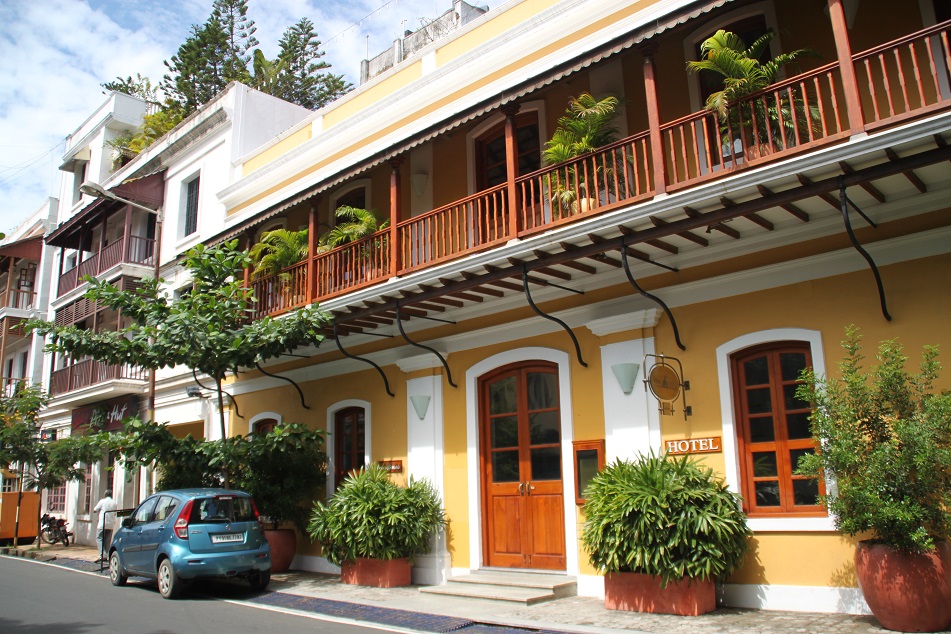


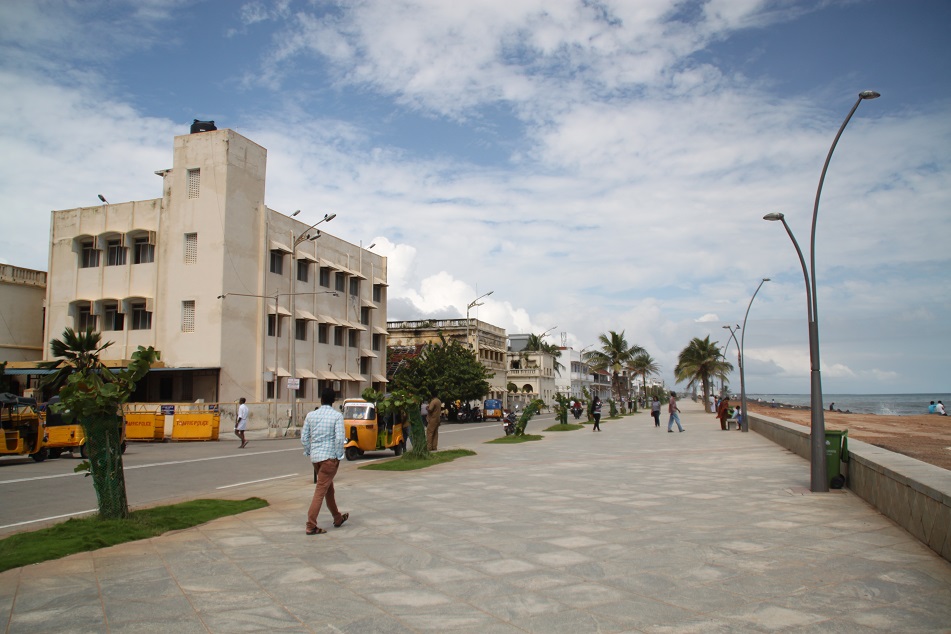
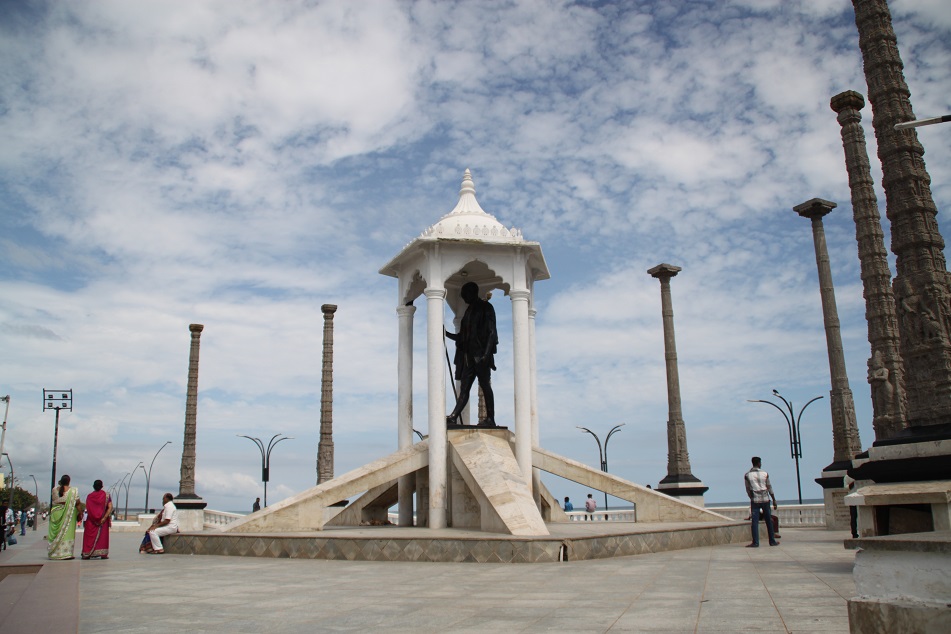
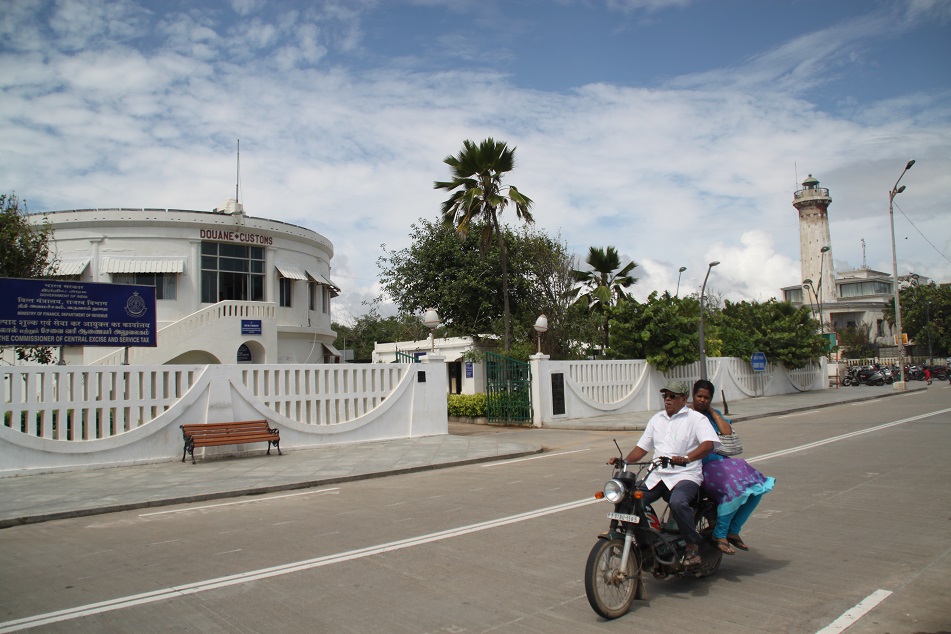
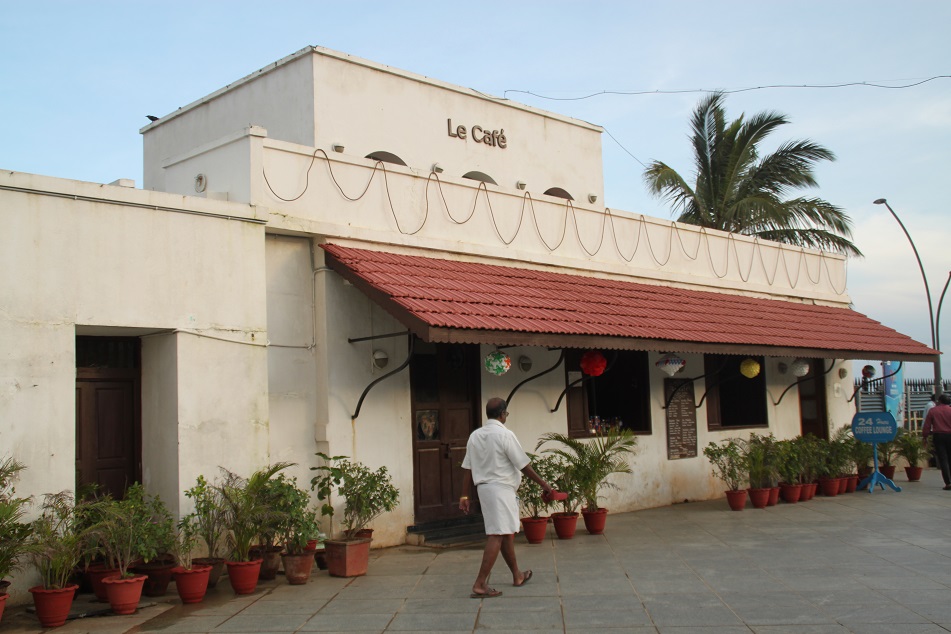
Incredible! I always thought that India was exclusively ruled by the British. I also read the novel The Life of PI, but the fact that Pondicherry, a French colonial town in India, was Pi’s home town totally escaped my attention. Thank you for your interesting post with the outstanding photos. The picture of the cathedral turned out especially beautiful.
LikeLiked by 1 person
Apart from the French, the Danish once also held a small colonial possession in India. I wanted to visit the old Danish fort in Tamil Nadu, but unfortunately there wasn’t enough time. Maybe next time! Thanks for reading, Peter. I’m glad this post provided you with a glimpse of India’s former French colony.
LikeLiked by 1 person
Thank you, dear Bama! Apart from the very interesting information I find on your blog there is this very important aspect of the exchange of different cultural viewpoints, which in a small way brings people of various backgrounds together. I am looking forward to reading your next post.
LikeLike
My pleasure, Peter. I believe understanding cultures different from ours is a step toward making the world a better place. I know a lot of people don’t even bother doing it, but building bridges — not widening gaps — is the only way to move forward. My post will be about an important chapter in Indian history which paved the way for the British to eventually assume direct control of all lands in the subcontinent.
LikeLiked by 1 person
Baru tau bam ada kota di India yang bernuansa prancis kayak pondicherry… kirain di India cuman Pengaruh Inggris saja yang ada.
LikeLike
Iya, sebagian besar orang, termasuk saya sebelum baca Life of Pi, taunya India itu cuma dijajah sama Inggris aja. Ternyata Prancis dan bahkan Denmark juga pernah memiliki tanah jajahan di India.
LikeLiked by 1 person
Jadi French Quarter yang keren ini hanya sebagian kecil daripada keseluruhan luas Pondicherry, Bam? Dan sisa dari sebagian yang keren ini, layaknya tipikal kota-kota India lainnya kah? Selama ini aku pikir, keseluruhan Pondicherry memang serapi ini.
LikeLike
Yes, bener Bart. Kayak Penang, dimana bangunan-bangunan bersejarahnya terpusat di George Town, di Pondicherry ini yang masih terasa nuansa Prancisnya ya di French Quarter itu. Di luar itu masih ada sih sisa-sisa masa penjajahan Prancis, tapi lebih kental nuansa Tamilnya.
LikeLiked by 1 person
Cukup luas French Quarter nya Bam? Bisa disusuri dengan jalan kaki atau harus berkendara?
LikeLike
Jalan kaki bisa kok Bart. Gak nyampe 4 km persegi sih harusnya.
LikeLiked by 1 person
Ooo gak seberapa besar juga ya. Aku pikir seukuran atau lebih besar dari Georgetown.
LikeLike
George Town masih agak lebih besar dibanding Pondicherry sih, walaupun tetap bisa dieksplor dengan jalan kaki. Tapi emang French Quarternya Pondicherry ternyata gak terlalu luas, tapi ya mending lah banyak bangunan peninggalan Prancis yang masih utuh.
LikeLiked by 1 person
*dan langsung bayangin kondisinya waktu masih di bawah Perancis*
LikeLiked by 1 person
Kamu habis dari Everest belok ‘dikit’ ke Pondicherry aja Bart, hehe..
LikeLiked by 1 person
I wish hahahahaha. Aku tuh terlalu mepet beli tiketnya. Datang, bikin permit, naik, turun, istirahat sehari, langsung balik lagi 😂
LikeLike
Ya next time kalo gitu. So many places to visit, so little cuti — eh tapi itu lebih berlaku buat aku ding, hehe.
LikeLiked by 1 person
yes great place indeed. try to visit and stay for a while in Auroville next time. that’s would complete your journey in and out 😊😊😊
LikeLiked by 1 person
I heard about Auroville being an experiment town where people from different backgrounds live. It sounds intriguing, to say the least. Maybe next time when I go back to southern India I should spend a few days there. Thanks for the recommendation!
LikeLike
What really caught me was the fact that you have also come across the Life of Pi. It’s a wonderful novel that’s made me imagine India as well as surviving the wild ocean with a tiger.
That aside, thank you for sharing your experiences in Pondicherry. The buildings in the photos you posted have a quaint grandeur about them.
LikeLike
I discovered the book long before the movie came out, and before I even dreamed of visiting India. So it felt really special when I finally reached Pondicherry. Thank you for reading. The French churches there were not as big as the Portuguese cathedrals in Goa, but they were still impressive nonetheless.
LikeLike
You paint a beautiful picture of the place, thank you for sharing.
LikeLike
The French Quarter of Pondicherry really was beautiful — I particularly liked the beachfront area since I wasn’t expecting to find such a wide and clean promenade there. Thanks for reading, Katie!
LikeLiked by 1 person
I enjoyed reading about the history of Pondicherry Bama. We visited a few years ago and were thoroughly charmed by it.
Alison
LikeLiked by 1 person
The food was a bit of a letdown for us since we were expecting to find some kind of Indian-French fusion dishes there. However, we loved the overall ambiance of Pondicherry and its well-preserved French colonial buildings. Thanks for reading, Alison.
LikeLiked by 1 person
One of my enduring memories of Pondy is of having a snack in a very down-home place across the road from the waterfront. It was pokodas: “balls” of some kind of fried vegetables and was absolutely delicious. Scroll down, there’s a pic of it in this post:
https://alisonanddon.com/2012/02/24/tiruvannamalai-india-part-4/
I don’t often write about food, or even remember it, but the pokodas stuck with me.
LikeLike
I just took a look at your photo of pokodas and can’t help but think of a fritter called bakwan here which somewhat resembles pokodas. Do you know if they mix the veggies in a batter before frying it or not? Because that’s how bakwan is made.
LikeLiked by 1 person
I don’t know for sure Bama, but I think so. It seemed battered. And very yummy.
LikeLike
Tracing food connections among communities in the region was one of the reasons I traveled for six months with James in 2015. So I am particularly intrigued by pokodas. This is definitely something I will try should I ever come back to Pondy! Thanks for the info, Alison.
LikeLiked by 1 person
Nama kotanya keren yaaa… Pondicherry, ga ada rasa-rasa India dinamanya hihi.. tapi liat fotonya waaaw bikin jaw dropping deh.. Perancis banget (sok tau saya spt udah kesana hihihi), paling engga di kota-kota IndoChina itu ya miriplah. And hebat banget ya ga ada campuran Perancisnya di makanan, bisa-bisa si Perancis bilang, sakitnya tuh disiniii (sambil nunjukin perut)😁😁😁 karena French food kan ga kalah hebatnya di dunia ini…
LikeLiked by 1 person
Nama resminya sih sekarang Puducherry, agak ada rasa India-nya. Tapi banyak orang (termasuk yang tinggal di sana) masih nyebut kota ini Pondicherry, atau Pondy. Hehe, iya turis Prancis yang ke sana mungkin heran juga makanan lokal gak ada jejak Prancis sama sekali. Tapi menurut saya sih akan lebih menarik kalau justru masih ada rasa Prancis di makanan lokal sih, kayak di Goa yang makanannya berasa banget fusion antara Portugis dan India. Jadi memperkaya khasanah kuliner setempat sebenernya. Tapi ya yang namanya lidah. 🙂
LikeLiked by 1 person
Very informative post Bama. I always thought the British ruled India exclusively.
LikeLike
I guess most people did. Given its importance in history, it shouldn’t be too surprising to know that the British were not the only European rulers in colonial India. Thanks for reading, Edwin!
LikeLike
Hi, Bama. Pondicherry has been in my to-visit list since I saw the Life of Pi movie (didn’t read the book) solely because of the French buildings. I thought it was interesting because India in my mind – well, I’ve never stepped foot there – has a very strong style in, well, just about anything, but turns out there is a city such as Pondi, though reading your post I found out that it’s only a small quarter. I’m wondering though, are the French buildings very well maintained? And did the French left some traces in other parts of Pondi as well, like maybe scattered buildings here and there in among the usual Indian neighborhood?
Anyway, great post, Bama 🙂
LikeLiked by 1 person
Pondicherry is surrounded by Tamil Nadu to the north, west and south. The Indian state itself is known for its colorful Hindu temples — similar to the ones you can find in Singapore, Malaysia and North Sumatra. So for us visiting Pondy was a nice break from those neon colors. In Kumbakonam, the city where I stayed before going to Pondy, there were a lot of such temples, so much so probably it has the most Tamil temples per capita among the places I went to in the state. Upon entering Pondicherry I felt that we hadn’t really left Tamil Nadu. Fortunately the majority of French colonial buildings in the French Quarter were well maintained — some were turned into boutique hotels, some into restaurants, but there were also some which were occupied by various government departments. Outside of the quarter, there were still a few French buildings here and there — which created rather exotic juxtapositions with their surroundings. Thanks for reading and sharing your thought, Vira!
LikeLike
Great post. I’ve read Life of Pi, and was curious about the French colony myself (I thought only the English had colonies there. Very interesting and great photographs.
LikeLike
It seems like I am not the only one who’s fascinated by the fact that the British were not the sole European colonial power in India. I have visited Goa (once part of Portuguese India) and Pondicherry (controlled by the French), and I almost went to Tharangambadi which was controlled by the Danish. Unfortunately, my friend and I only had so much time and we decided to keep it for our future trip to India. Thanks for reading and leaving such a kind comment!
LikeLike
Bama, I found it quite amusing (and strange) that there was a Joan of Arc statue in front of the Notre Dame des Angers, thousands of kilometers away from the French homeland! Not sure if her story would strike a chord with the local Tamils. I too was surprised by the lack of baguettes – in contrast to the former colonies of Laos and Vietnam – and other signs of French influence on the local cuisine.
LikeLiked by 1 person
I was actually wondering why that statue was there! Maybe it’s more of a symbol of her values, rather than her real story. In Pondicherry, I was expecting to find dishes like what we tried in Goa, some Indian curries with European twists. Shame there was none, or maybe we weren’t looking at the right place?
LikeLiked by 1 person
Bama, this stirred memories of our sweltering July weekend in 2014. Your opening shot is gorgeous. We missed visitng that church. The absence of fusion in the food disappointed us too. And the uniformly bad breads and coffee 🙂
PS: Pakodas are quite like fritters. Usually consisting of sliced onions or vegetable dipped in batter made out of chick pea flour.
LikeLike
PS: I have to commend you on your consistent posting schedule Bama. Hoping to catch up with all the Spice Odyssey posts I have missed, soon.
LikeLike
It’s not easy, but basically I always push myself to be ahead of schedule, like I explained to you over dinner in Mahabalipuram. This Spice Odyssey series will end in a few more months, then I can start the posts on Japan and other places I visited in 2015 but not related to the spice trade. Take your time, Madhu. I really really can’t wait to read your upcoming posts!
LikeLiked by 1 person
I knew I wasn’t the only one who was disappointed with the absence of French-Tamil food! With a little creativity, I believe something great could be invented. Thanks for the info on pokodas, Madhu. I guess the difference from the fritters I know here is that we use wheat flour, instead of chick pea, for our batter. Still, I’m quite intrigued. 🙂
LikeLiked by 1 person
I’ve always liked the sound of the name Pondicherry, which made me very curious about what the town looks like. Thanks for taking me their with your words and photos!
LikeLiked by 1 person
The first time I learned about Pondicherry, the name sounded almost comic-y. But my trip in November 2015 proved that the city was more romantic than quirky. Glad you enjoyed this post, Kelly!
LikeLiked by 1 person
Pingback: Thanjavur and the Doctrine of Lapse | What an Amazing World!
Looks different at all compared to any Indian cities I know, mas Bama! French buildings, clean streets, I think I love this city (or town?) better than Goa. Aku juga baru tahu ada jajahan Perancis di India 😀
An informative and enlighten post, mas. (brb googling about Pondicherry)
LikeLike
Makasih ya dek Nugie (duh, berasa tua banget!). 🙂
Bangunan peninggalan Prancis di Pondicherry ini memang sebagian besar masih terawat dan cantik-cantik pula. Kamu pasti betah deh berlama-lama mengeksplorasi jalanan Pondy yang tenang, sambil foto-foto bangunan-bangunan yang ada. Yang masih agak ngeganjel di saya itu the fact bahwa waktu di Tamil Nadu gak sempet melipir ke Tranquebar (ex-jajahan Denmark di India). Selain waktu yang terbatas, pas saya di Tamil Nadu cuaca memang kurang mendukung untuk bisa leluasa ke sana sini.
LikeLike
Wah, ex jajahan Denmark? Gawat, nambah lagi wishlist di India. Kayaknya kalo ngetrip ke India highlight-nya bakal Tamil Nadu nih 😂
LikeLike
Gawat kan? Hehe.. India memang gudangnya peninggalan sejarah, mulai dari zaman kerajaan yang jumlahnya banyak banget, sampai ke zaman kolonial Eropa.
LikeLike
Mas (biar berasa muda hehe), ke India itu bisa Voa kan ya?
Aku gak tau apakah bakal suka sama perkotaan Delhi atau Bombay, tapi dua kota di Tamilnadu ini bikin makin pengen ke India!
LikeLike
Pas saya mau ke sana fasilitas VOA udah gak berlaku untuk WNI. Gantinya kita harus apply e-visa. Form isian elektroniknya lumayan banyak bagian-bagiannya, jadi agak menyita waktu ngisinya. Tapi selebihnya cukup gampang kok untuk dapetin e-visa ini.
LikeLike
I see. Makasih infonya, mas!
LikeLike
Sama-sama Nug. Selamat merencanakan perjalanan ke India!
LikeLiked by 1 person
Honestly, selain Jepang, aku juga korban budaya populer India. Jaman SMP, kakakku (cewek) suka banget nonton film India. Had no choice, aku pun ikut nonton.
Eh, lama-lama jadi suka dong! Sampai aku lebih hafal judul-judul film, nama-nama aktor dan aktris, sampai koreografi lagu-lagunya.
Cuma yang sedikit membuat ragu buat trip ke India itu adalah… sanitasi, hehehe.
LikeLiked by 1 person
So far, film India yang paling bagus menurut saya sih PK. Pesan moralnya bisa diterapkan juga tuh di Indonesia.
Soal sanitasi di India, selama saya satu bulan di sana ternyata gak separah yang dibayangin sih. Beberapa kali makan thali set di semacam wartegnya sana, komplit pake sayuran mentah, baik-baik aja tuh si perut. Tapi ya memang sebaiknya kemana-mana bawa tisu basah in case perlu bersihin tangan atau kaki.
LikeLike
Aku nonton PK dalam penerbangan Malindo Air, hahaha. Karena terlalu singkat, jadi nontonnya nggak kelar.
Noted, mas. Segera disusun itinerary-nya 😀
(susun aja dulu)
(berangkat gak tau kapan)
(langkah iman)
LikeLike
Saya trip enam bulan waktu tahun 2015 juga mulai nyusun itinerary-nya sejak 2012. Jadi bisa tau berapa banyak duit yang mesti ditabung gitu. Dari tahun 2012 sampe 2014 pas mulai beli tiket pesawat itinerary-nya udah sempet direvisi sampe lebih dari 20x kayaknya, hehe.. So, menyusun itinerary itu langkah awal Nug (dan bikin semangat nabung!). 🙂
LikeLike
Yosh! Thank you motivasinya, mas 🙂
LikeLike
Sama-sama Nug.
LikeLike
You roped me in with the Life of Pi connection (fun book), but kept me with your description of this unique city! As others have noted, even the name is interesting (I somehow always hear it in my head as Ponchiderry, though!)
LikeLiked by 1 person
Maybe I should try to finish reading that book. My younger self found the novel a bit boring after reading a few chapters. But the more I see the world, the more I’m drawn into stories I might have ignored many years ago. Thanks for reading, Lex. As for the name, it first struck as not sounding very Indian at all to me. But now the government officially changed the name into Puducherry, although Pondy remains in most people’s minds.
LikeLiked by 1 person
Pondichéry looks very beautiful. i had read about it in novels and somehow it still fits the description :p
LikeLike
I believe being someone from the French-speaking world you must have heard the name Pondicherry long before Life of Pi was published. I don’t know how this former French colony is portrayed in other novels — quite positively and romantically, I suppose? Thanks for dropping by, Aurélie.
LikeLike
Amazing places! Amazing language! Thanks for sharing. Where is the new adventure?
LikeLike
And thanks for reading, María. I don’t have any plans to go somewhere in the upcoming weeks, but in April I’ll be going to Central Vietnam.
LikeLiked by 1 person
Love Love the photographs!:)
LikeLiked by 1 person
Appreciate your kind words guys! Glad you enjoyed them.
LikeLike
lovely place….. lovely photos….. lovely narration…..
LikeLike
Thank you, Sudhir! I’m already dreaming of returning to India.
LikeLiked by 1 person
😃😃
LikeLike
I have always wanted to go to this place. Your pictures are forcing me to visit the place asap. I hope you tried things from some amazing bakeries out there.
LikeLike
It seems like a lot of people are very intrigued by Pondicherry. Hopefully you’ll visit this corner of southern India sooner than later. As for bakeries, I didn’t see any when I was there. Maybe I wasn’t looking at the right places, or maybe there weren’t that many options available to begin with.
LikeLiked by 1 person
Maybe, I haven’t been there yet but have heard a lot about Baker Street.
LikeLike
I should look up that part of Pondicherry the next time I come.
LikeLiked by 1 person
Sure, there are few other places too. You can check out my blog.
LikeLike
Beautiful pictures… thank u for guiding…
LikeLike
And thank you for dropping by and leaving such kind words, Jaya.
LikeLiked by 1 person
Amazingly described with detailed history and captivating pictures ✌️
LikeLike
Glad you enjoyed this post, Pooja! I can’t believe it’s almost two years now since I went to Pondicherry.
LikeLike